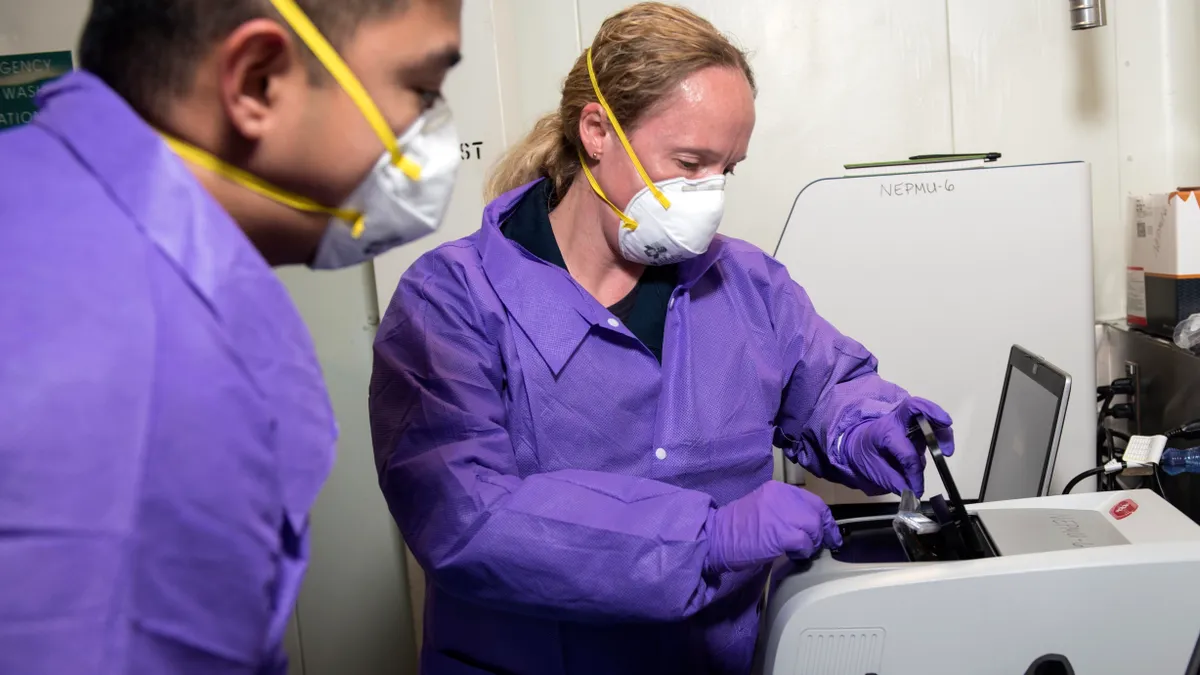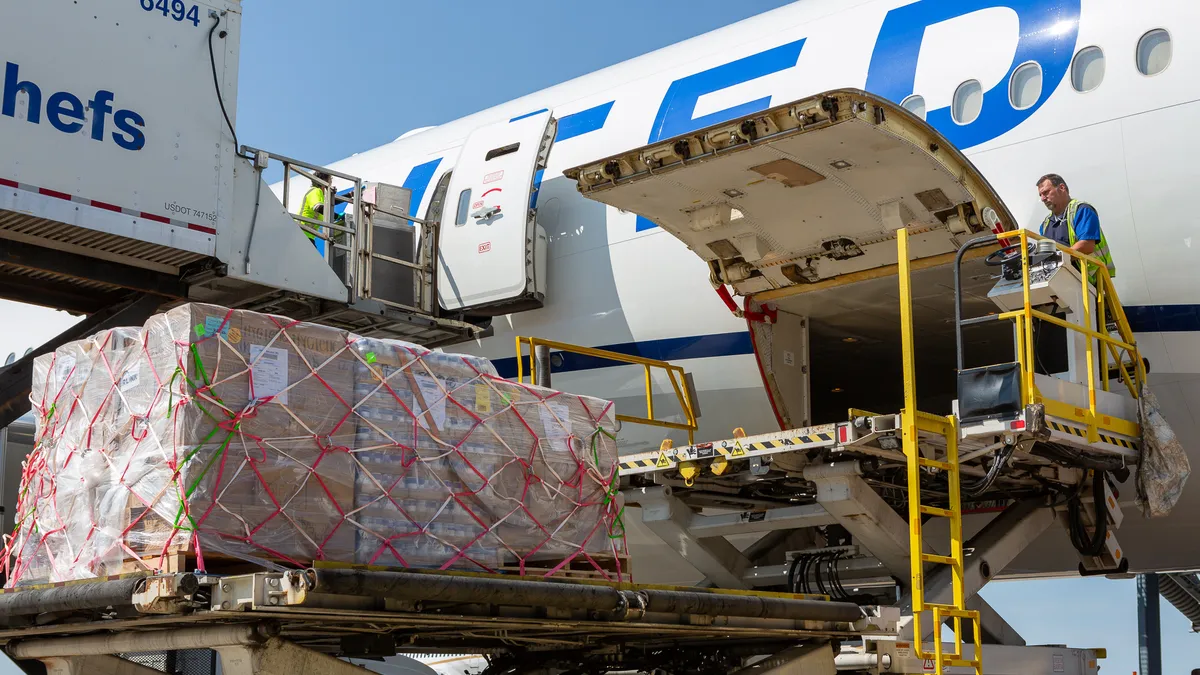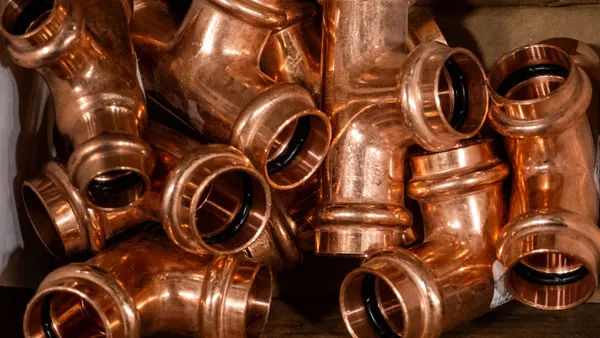Dive Brief:
- U.S. seaborne imports of ventilators, personal protective equipment (PPE) and pharmaceuticals fell 26.6%, 21.6% and 1.8% respectively in the first half of July compared to the same period in June, according to an analysis by Panjiva, S&P Global's supply chain research unit.
- The drop is largely attributable to a 6.9% decline in U.S. ocean freight imports from Europe and a 3.7% decline in imports from China in July, according to the report.
- The report cites efforts by President Trump to encourage domestic production of key supplies used to combat the coronavirus pandemic as a potential reason for the reduction. However, Panjiva does not track data on the U.S.' manufacturing capacity, said Chris Rogers, a trade analyst with S&P Global Market Intelligence.
Dive Insight:
The drop in imported supplies comes as coronavirus cases across the U.S. rise.
"The reverse in sourcing may reflect the resurgence of cases elsewhere in the world and prioritization of supplies to those markets," Rogers said. "That would be consistent with the pattern seen in the early stages of the pandemic," when China restricted certain PPE exports to reserve supply for its population during an initial spike in cases.
U.S. medical staff have raised concerns about potential supply shortages. The U.S. is dependent on China and India for pharmaceuticals, with an estimated 80% of active pharmaceutical ingredients produced abroad.
Supply chain experts anticipate critical supply chains related to healthcare products and PPE will prioritize resilience over cost and begin to reshore suppliers and operations.
"A more positive reading could be a build up of manufacturing capacity within the U.S., reducing the need for sourcing from overseas," he said.
The Trump administration has at times invoked the Defense Production Act or granted funding to companies, recently Kodak and Fujifilm, to produce PPE, experimental vaccines and other key products, to discourage U.S. dependence on Chinese manufacturing.
However, even with these policies in place, they are "designed to help boost manufacturing on a scale of quarters to years, not weeks to months, so even if passed may not bring significant new supplies this year," Rogers said.















